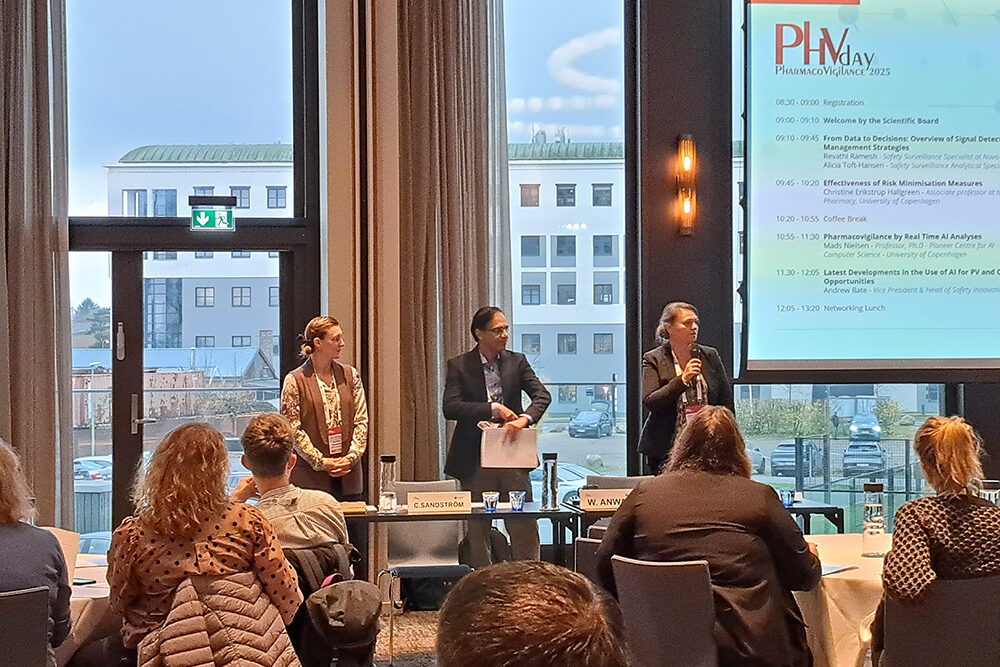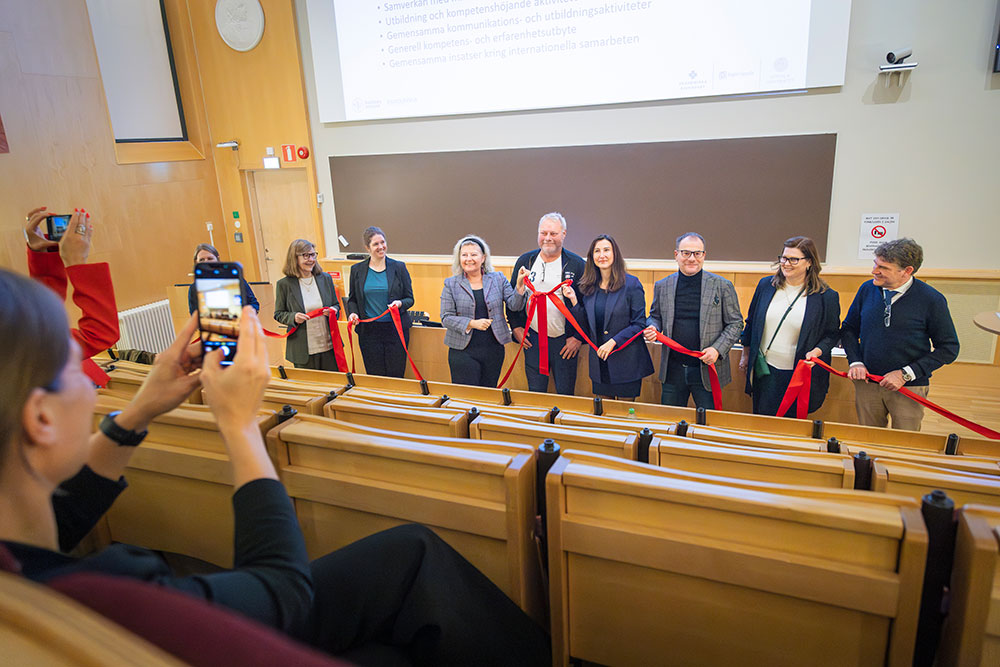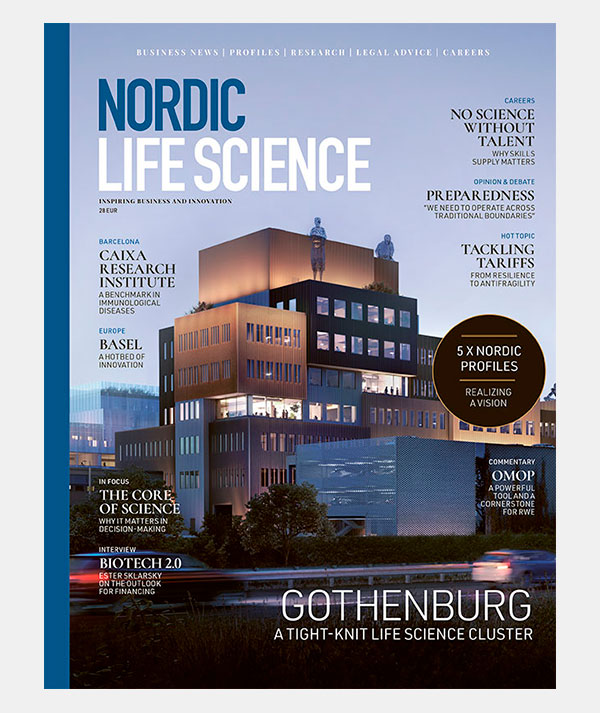The European life science industry: The time to step up is now

Europe ranks highly when it comes to life science know-how and knowledge, but the region is falling behind when it comes to R&D and turning science into real-world solutions. Complex regulations, a fragmented market, scattered funding, and the potential US market tariffs are just some of the challenges ahead.
The global life science industry is changing rapidly, and it is not just due to the accelerated scientific progress we’ve seen in fields like artificial intelligence (AI) and cell and gene therapy. It is also, especially recently, due to a changing geopolitical landscape. Today there are uncertainties and less stable relationships between countries and we are facing a new landscape for trade, market entry, collaboration, and even for carrying out science in different countries.
The conditions for European life science companies are changing as well, and many stakeholders and organizations stress the need for a more unified, less complex, and stronger European life science ecosystem.
“For the competitiveness of the EU, it is crucial that the industry is strengthened, and the current global turmoil is forcing us to focus on resilience,” says Alexandra Peth, Managing Director of Finnish Bioindustries, Finland’s biotechnology industry association.
Many countries are currently focusing on building their armies, but how many realize that without medicines, their army and population won’t survive long.
“Europe will be left very vulnerable if it cannot produce medicines or medtech devices for its citizens on its own. Many countries are currently focusing on building their armies, but how many realize that without medicines, their army and population won’t survive long. We are seeing that many companies are interested in understanding the role of the industry in times of crisis,” says Marjo Puumalainen, International Director at SwedenBIO, the national association for the Swedish life science industry.

A lack of risk appetite
Currently, the European life science sector directly employs over 900,000 people and it is the largest contributor to the EU’s trade balance. The region has a strong legacy of cutting-edge universities producing both the innovation and talent that are prerequisites for a strong life science industry.
High-quality manufacturing and collaboration between different sectors are also key elements for the European life science industry, describes Puumalainen. “However, the European life science industry lacks the risk appetite when it comes to investments and this slows down commercialization of innovation and growth of the companies,” she adds.
“One of the core challenges is to ensure large-scale European funding for the life science and biotech industry,” agrees Peth.
Companies need to see that launching a new drug or a medtech device in Europe is good business for them.
Over the last two decades, 25% of Europe’s share of global R&D investment has been redistributed to other regions of the world. Similarly, its share of global clinical trials has fallen from 25.6% to 19.3% in the last decade according to Mario Draghi‘s (former European Central Bank President) report on European Competitiveness published last year. European biotechs are only able to access around 20% of the finance that their US counterparts have access to.
“Companies need to see that launching a new drug or a medtech device in Europe is good business for them. In this way, we ensure that Europeans receive the latest medicines and that companies can operate in Europe,” emphasizes Puumalainen.
A fragmented market
One of Europe’s greatest disadvantages when competing with, say, the US and China, is the very nature of the region. That is, it is not only one country but 44 (according to the United Nations), and 27 of them are members of the European Union (EU).

“This makes the European life science market more fragmented in terms of both the market for products and the market for capital,” explains Niels Abel Bonde, Chairman of the Board of the Swedish-Danish life science cluster organization Medicon Valley Alliance (MVA). This is also one of the key points highlighted in Mario Draghi’s report, he notes.
European companies don’t have the benefit of a big internal market, like Chinese and US companies do.
“We don’t have a well-functioning internal market. What we do have is high-quality research and interesting companies, but European companies don’t have the benefit of a big internal market, like Chinese and US companies do. We also suffer from heavy and sometimes even overlapping regulation,” agrees Peth.
“As Europe lacks a common reimbursement system for pharmaceuticals and medtech devices, the European life science market appears scattered and difficult to navigate,” adds Puumalainen.
Innovation: Capital and talent
When it comes to scientific progress and conditions for conducting excellent science, Europe performs very well, all organizations agree, but the problem is innovation – when science needs to become innovation and be scaled. Just three decades ago half of all new treatments originated in Europe. Now it is just one in five, according to the European Federation of Pharmaceutical Industries and Associations (EFPIA). It matters where innovation happens, EFPIA states.
“This is partly to do with access to capital, where the US is often the preferred place to list your company once you have reached a certain level of maturity,” says Bonde.
We need to make Europe even more enticing so that people choose to come and live and work here.
“Attracting talent is also a challenge, I believe. Traditionally, Europe has been more reluctant and less open and attractive to global talent, for a variety of reasons. I do, however, sense a change in perception, at least in Denmark and Sweden, where attracting talent is crucial if the industry is to continue to grow and prosper,” he says.
“We need to make Europe even more enticing so that people choose to come and live and work here. We also need to create international centers of excellence combining world-class academia with an inspiring start-up community, entrepreneurial spirit, and access to lab facilities and top-notch hospitals. In the Medicon Valley region we are currently building “Innovations district Copenhagen” which has been inspired by Kendall Square in Boston and has international ambitions,” continues Bonde. “Innovation is key to future prosperity and this is where Europe is losing pace. The cluster and targeted investment in existing clusters of excellence is surely part of the solution.”
Near-shoring or move to the US
When the world feels less secure and harder to predict, industries look closer to home for collaborators and business deals. Indeed, strategic near-shoring between Medicon Valley’s members has already started, according to Bonde.
“For geopolitical reasons and due to the risk of sanctions and/or tariffs, companies with a global reach have been diversifying production for several years to prepare for a potential crisis, which most people of course hope to avoid. But as they say, “hope is not a strategy” and the global economy is generally weaker, and less innovation and wealth are being generated,” he says.
SwedenBIO also hears from stakeholders in the industry that manufacturing companies are assessing whether they need to move their manufacturing to the US due to the tariffs, notes Puumalainen.
Regulatory simplification
The European Commission will soon release a new Strategy for European Life Sciences, to be adopted in 2025. It has been 22 years since the last one was developed. Stakeholders had until April 17, 2025 to provide the Commission their views, and had an opportunity to help design the strategy. In April four industry organizations in Sweden, Lif – the research-based pharmaceutical companies, SwedenBIO, IKEM – the industry and employer organization for Sweden’s innovation and chemical companies, and Swedish Medtech – the Association for medical technology in Sweden, submitted a joint statement emphasizing the need for a focus on concrete reforms. They stressed that for legislation to truly contribute to a competitive and innovative Europe, the EU needs a new approach where legislation weighs industrial and societal benefits against risks.
The main recommendation raised by the four organizations was the establishment of a life science office in Brussels to coordinate work across all EU authorities and entities working on issues that directly or indirectly affect the life science industry.
The main recommendation raised by the four organizations was the establishment of a life science office in Brussels to coordinate work across all EU authorities and entities working on issues that directly or indirectly affect the life science industry. EFPIA has also recommended that the Commission ensure leadership through a dedicated Office for Life Sciences in the Commission and dialogue with the sector via a new European Life Sciences Council. The EFPIA also suggests putting resources into reforming the regulatory system to make it more agile for faster approvals of new medicines, as well as investment in modern manufacturing.
Multinational clinical trials
Another proposal to the EU from the four Swedish life science organizations is related to clinical trials. Although the EU has taken steps in the right direction, including a new EU clinical-trial map, challenges remain for those who wish to conduct multinational clinical trials.
“The strategy should promote effective coordination between national ethical review boards and regulatory authorities, as well as establish an EU body with a binding mandate to approve multinational clinical trials. This will significantly simplify and accelerate the start of trials throughout Europe,” stated Jessica Martinsson, CEO of SwedenBIO.
US market tariffs
While pharmaceutical companies have not yet been subject to reciprocal tariffs, the Trump administration is considering launching a so-called 232 investigation into pharmaceuticals, which could lead to import duties under the Trade Expansion Act. Speaking at an event at the National Republican Congressional Committee in April, Trump said the tariff will incentivize drug companies to move their operations to the US, reported Reuters.
SwedenBIO stated that this temporary relief is welcome, as time is of the essence, but the problem remains and must be addressed by Sweden and the EU collectively. In the long run, the EU’s life science industry will probably need to reduce its dependence on the US to mitigate the impact of extraordinary events like these.
It is worth noting that there is very broad support in the US for making medicines more affordable, and we have good reason to hope that policy-makers there and elsewhere will keep that top-of-mind as the trading environment develops.
NLS asked Róbert Wessman, CEO of Icelandic Alvotech, who recently announced their acquisition of the Swedish Xbrane’s biosimilars candidate and parts of its organization, if he envisions an even stronger European presence for his company given the current global life science landscape.

“Iceland may not have been the most obvious place to build up a global biosimilars enterprise, but in a commercial sense it is proving to be a very good base in these changing times. Coming from a Nordic country, within the EEA and with strong trade links to both Europe and the US, we believe we are well positioned to serve all of these markets, as well as others around the world,” he says.
“The evolving tariff environment presents both risks and opportunities for us. It is worth noting that there is very broad support in the US for making medicines more affordable, and we have good reason to hope that policy-makers there and elsewhere will keep that top-of-mind as the trading environment develops,” continues Wessman.
The Nordics leading the way
The Nordics are strong in innovation and collaboration, so we need to dare to lead the way in showing how to build and grow life science companies by putting the right people together to solve global health problems, emphasizes Marjo Puumalainen.
“By creating a common reimbursement system across Nordic countries, the Nordic market would be more attractive for both Nordic companies and global companies. Most importantly, Nordic patients would benefit from the latest healthcare,” she says.
“I believe that the Nordic countries, spearheaded by Denmark and Sweden, could start by strengthening the current life science collaboration between the two countries to stimulate innovation and create more critical mass and points of contact. The newly updated national Danish and national Swedish life science strategies have been developed in parallel but, apparently, they are not coordinated. There is still room for improvement,” adds Niels Abel Bonde.
Published: May 21, 2025












